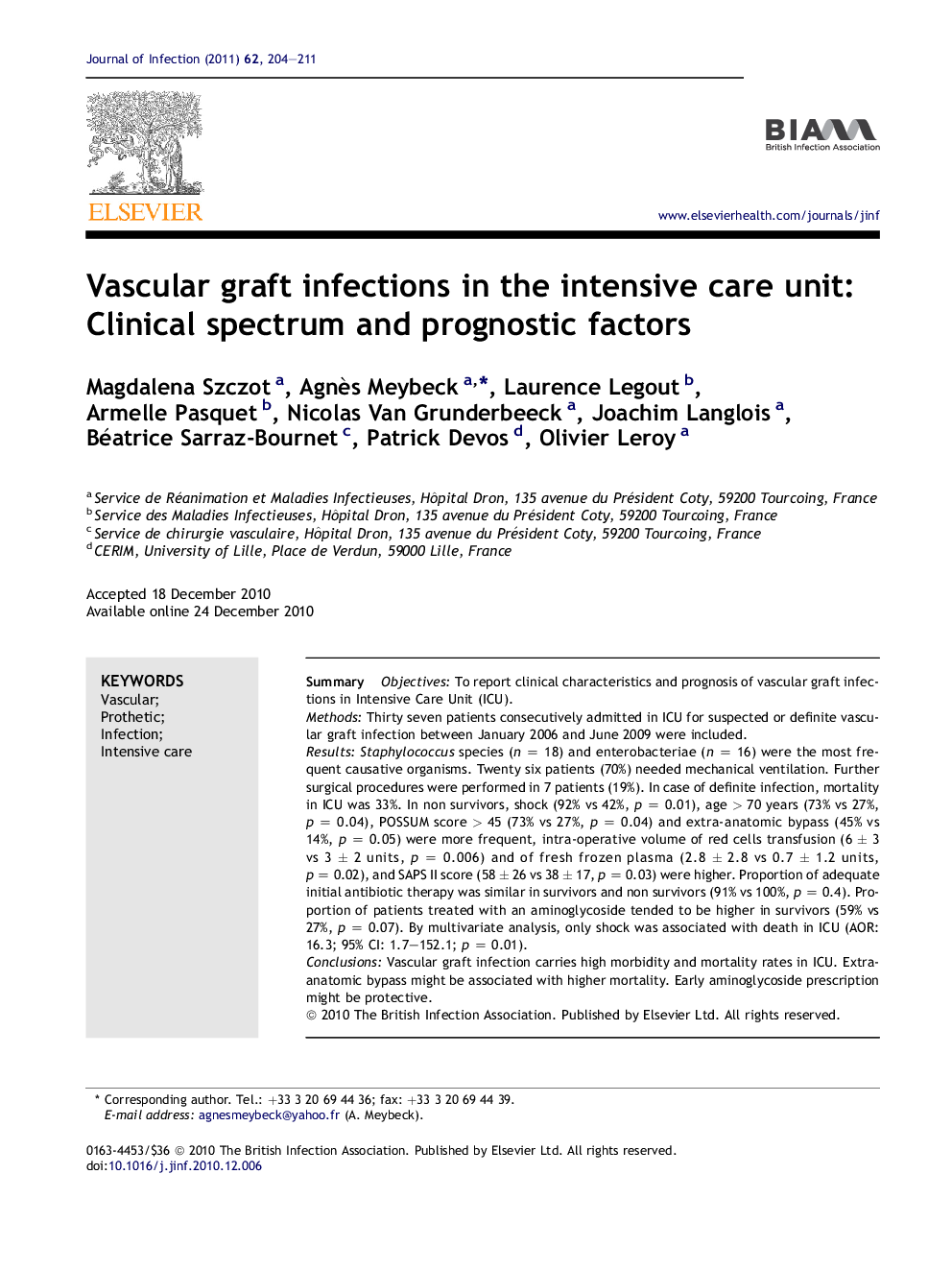| Article ID | Journal | Published Year | Pages | File Type |
|---|---|---|---|---|
| 3375601 | Journal of Infection | 2011 | 8 Pages |
SummaryObjectivesTo report clinical characteristics and prognosis of vascular graft infections in Intensive Care Unit (ICU).MethodsThirty seven patients consecutively admitted in ICU for suspected or definite vascular graft infection between January 2006 and June 2009 were included.ResultsStaphylococcus species (n = 18) and enterobacteriae (n = 16) were the most frequent causative organisms. Twenty six patients (70%) needed mechanical ventilation. Further surgical procedures were performed in 7 patients (19%). In case of definite infection, mortality in ICU was 33%. In non survivors, shock (92% vs 42%, p = 0.01), age > 70 years (73% vs 27%, p = 0.04), POSSUM score > 45 (73% vs 27%, p = 0.04) and extra-anatomic bypass (45% vs 14%, p = 0.05) were more frequent, intra-operative volume of red cells transfusion (6 ± 3 vs 3 ± 2 units, p = 0.006) and of fresh frozen plasma (2.8 ± 2.8 vs 0.7 ± 1.2 units, p = 0.02), and SAPS II score (58 ± 26 vs 38 ± 17, p = 0.03) were higher. Proportion of adequate initial antibiotic therapy was similar in survivors and non survivors (91% vs 100%, p = 0.4). Proportion of patients treated with an aminoglycoside tended to be higher in survivors (59% vs 27%, p = 0.07). By multivariate analysis, only shock was associated with death in ICU (AOR: 16.3; 95% CI: 1.7–152.1; p = 0.01).ConclusionsVascular graft infection carries high morbidity and mortality rates in ICU. Extra-anatomic bypass might be associated with higher mortality. Early aminoglycoside prescription might be protective.
